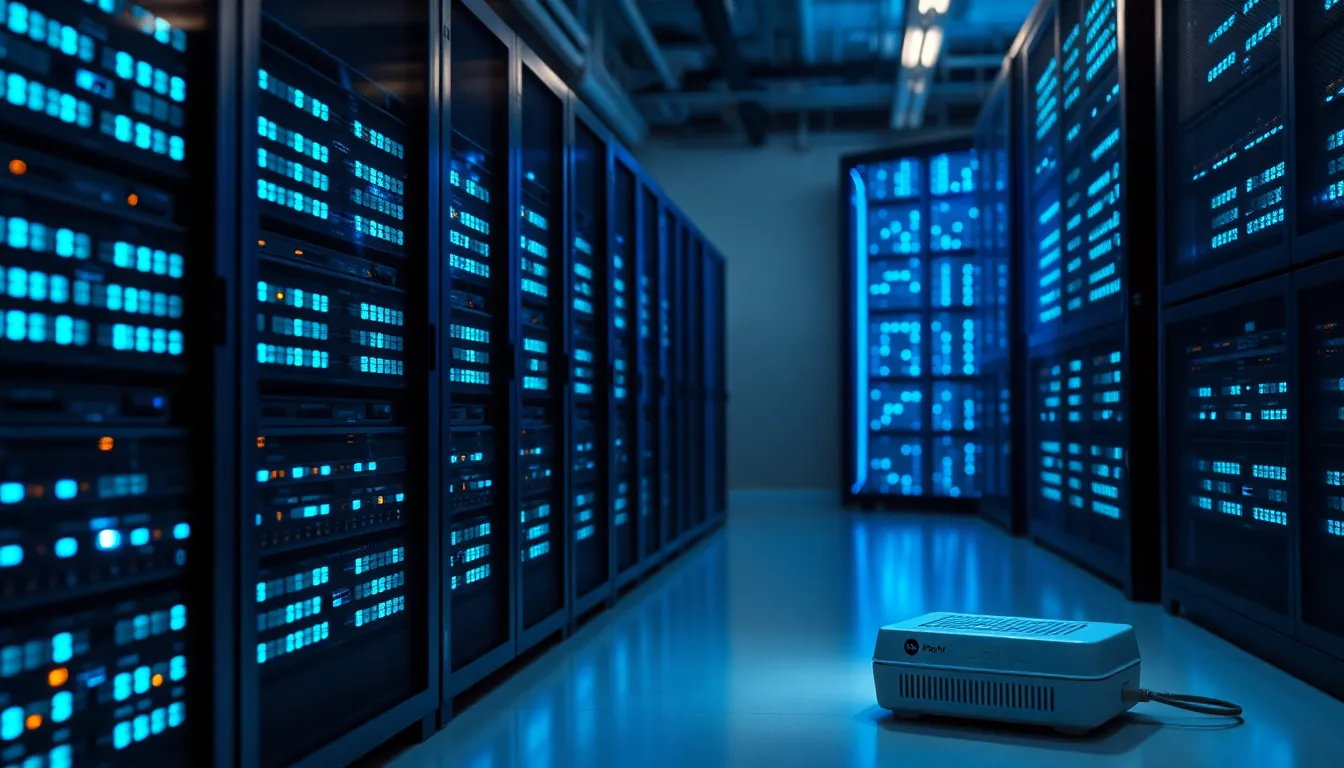In the tech world, the battle between edge and cloud computing is heating up faster than a laptop left in the sun. Both options promise to revolutionize how data is processed and stored, but which one deserves the crown? On one side, edge computing offers lightning-fast responses and real-time processing, perfect for those who can’t wait for data to travel halfway across the globe. On the other, cloud computing provides a cozy, centralized home for vast amounts of data, making it the favorite for businesses looking to scale without breaking a sweat.
Table of Contents
ToggleOverview of Edge vs Cloud
Edge and cloud computing serve different purposes within the tech industry. Each model has unique benefits and drawbacks, catering to various business needs.
Definition of Edge Computing
Edge computing refers to processing data closer to the source rather than relying solely on centralized data centers. This approach minimizes latency, allowing for quicker decision-making. Local devices or edge servers handle real-time data, which is essential for applications such as autonomous vehicles or Internet of Things (IoT) devices. By reducing the distance data travels, organizations achieve faster responses and improved overall performance. Certain industries, like healthcare and manufacturing, benefit greatly from edge computing’s ability to address time-sensitive operations efficiently.
Definition of Cloud Computing
Cloud computing allows data storage and processing on remote servers accessed via the internet. This model centralizes resources, making it easier for businesses to manage large data volumes. Organizations enjoy scalability and flexibility since they can quickly adjust their computing resources based on demand. Various service models, including Infrastructure as a Service (IaaS) and Software as a Service (SaaS), offer tailored solutions for different needs. Companies across sectors leverage cloud computing for its cost-effectiveness and ability to support collaboration, enabling teams to work together seamlessly from anywhere.
Key Differences Between Edge and Cloud

Edge and cloud computing differ significantly in their core functionalities and applications. These differences affect their suitability for various use cases.
Latency and Speed
Edge computing reduces latency by processing data near its source. This advantage proves crucial for applications demanding real-time responses, such as online gaming and autonomous vehicles. Lower latency also enhances user experiences by delivering quicker data access. Conversely, cloud computing introduces higher latency since data travels to and from centralized data centers. Increased distance can slow response time, particularly for time-sensitive tasks. Organizations requiring rapid decision-making benefit more from edge computing due to its proximity to data sources.
Data Processing and Bandwidth
Processing capabilities diverge between two computing models. Edge computing handles data near the source, mitigating bandwidth challenges. It efficiently processes data from IoT devices without straining network resources. High volumes of incoming data are managed effectively at the edge, decreasing reliance on centralized systems. In contrast, cloud computing excels in bandwidth management by utilizing extensive server capacities. It offers greater scalability for data storage, which appeals to businesses with fluctuating demands. However, the increased data transfer that cloud computing requires can lead to bottlenecks, particularly in bandwidth-limited scenarios.
Use Cases for Edge Computing
Edge computing excels in scenarios where low latency and efficient data processing are crucial. Numerous industries capitalize on its advantages to enhance performance and responsiveness.
IoT Applications
IoT applications frequently benefit from edge computing. Smart devices and sensors generate immense data volumes that require immediate analysis. Edge computing processes this data locally, reducing latency and minimizing reliance on central data centers. For instance, smart home technology offers real-time automation based on user behavior. Additionally, industrial IoT applications monitor equipment health and optimize maintenance schedules, enhancing operational efficiency. Proximity to data sources amplifies responsiveness, making edge solutions vital for IoT ecosystems.
Real-Time Data Processing
Real-time data processing is another significant application for edge computing. Many applications, including autonomous vehicles and healthcare monitoring systems, require instant decision-making. Continuous data analysis at the edge ensures timely responses to critical events. For example, autonomous vehicles process sensor data rapidly to navigate safely, while remote health monitors alert medical professionals of emergencies instantly. Speed and accuracy define these systems, showcasing edge computing’s superiority in high-stakes environments.
Use Cases for Cloud Computing
Cloud computing serves various business needs, offering flexibility and efficiency across numerous applications.
Data Storage and Backup
Cloud computing provides scalable solutions for data storage and backup, enabling businesses to secure critical information off-site. Remote servers host large amounts of data, ensuring accessibility from multiple devices. Many organizations rely on cloud services for automatic backup processes that protect against data loss. By leveraging cloud infrastructure, users can retrieve backups during incidents like hardware failures or cyberattacks. Essential features such as version control and data encryption enhance security and reliability. Companies employing cloud storage can easily increase or decrease storage capacities based on evolving requirements, optimizing costs and resources.
Scalable Applications
Scalable applications remain a core advantage of cloud computing, allowing businesses to adapt to fluctuating demands. Companies utilize cloud platforms like IaaS and PaaS for deploying and managing software applications efficiently. Rapid growth necessitates quick adjustments in computing resources, while cloud infrastructure accommodates increasing workloads seamlessly. Many industries benefit from the ability to scale applications without investing heavily in physical hardware. Flexibility becomes crucial, particularly during peak usage periods, where cloud solutions provide the necessary support. This adaptability enables organizations to innovate and expand while maintaining control over their operational costs.
The debate between edge and cloud computing continues to shape the tech landscape. Each model brings unique strengths tailored to different needs. Edge computing excels in environments demanding rapid responses and real-time data processing, making it indispensable for sectors like healthcare and autonomous vehicles.
Conversely, cloud computing offers scalability and flexibility, appealing to businesses that prioritize efficient data management and collaboration. As organizations evaluate their requirements, understanding the nuances of both models will be crucial for optimizing performance and driving innovation. Ultimately, the choice between edge and cloud computing should align with specific operational goals and technological demands.




